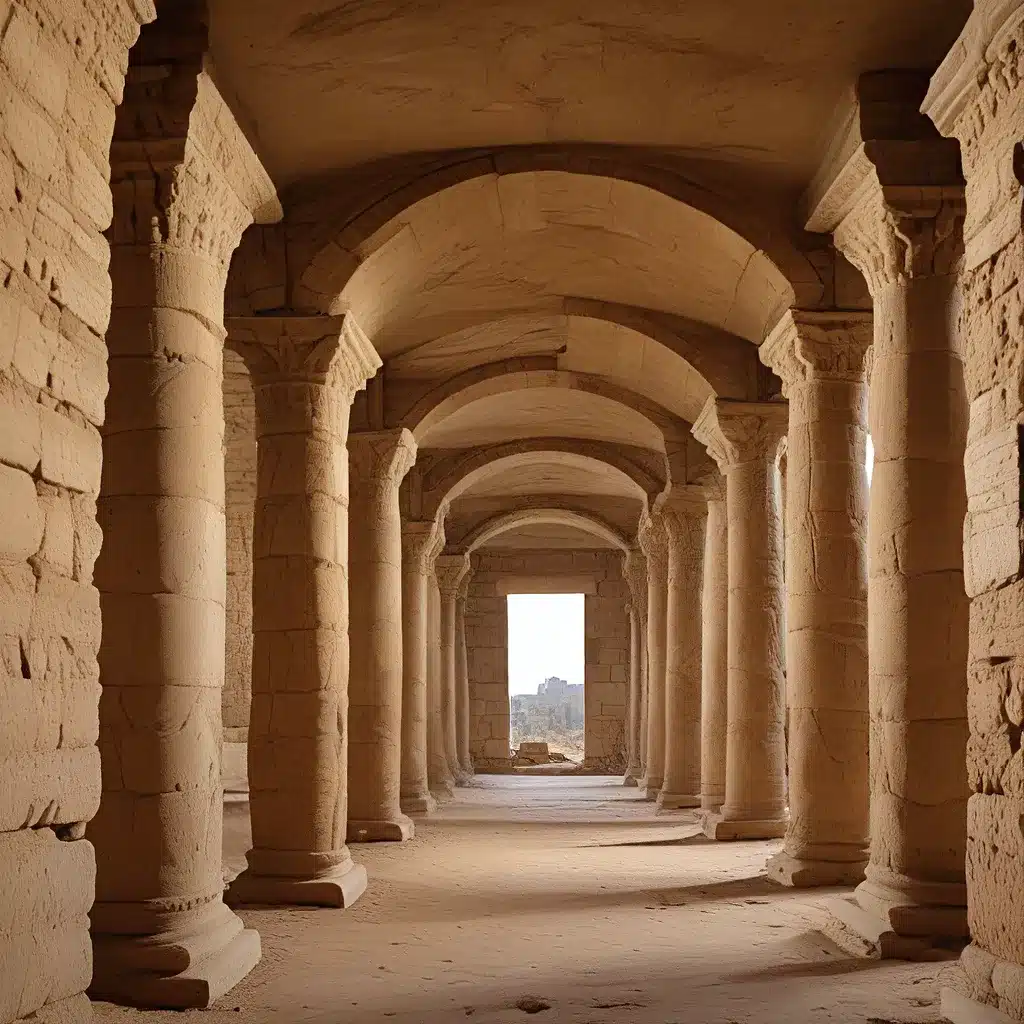
Uncovering the Mysteries of Ancient Civilizations
Throughout history, archaeological discoveries have shed light on the rich cultures and practices of civilizations long since gone. From the monumental structures of the Roman Empire to the intricate dwellings of Iron Age societies, these architectural remnants provide invaluable insights into the lives and experiences of our ancestors. By carefully reconstructing and analyzing these ancient buildings, archaeologists and historians have pieced together a more comprehensive understanding of the past, revealing the ingenuity and adaptability of our forebears.
One such example is the ongoing investigation of the Commanding Officers House at the Roman fort of Arbeia in modern-day South Shields, England. This fourth-century AD structure, meticulously reconstructed on the original site, offers a unique window into the daily lives and sensory experiences of those who occupied the northern frontier of the Roman Empire. Through a multifaceted approach that combines experimental archaeology and sensory-driven analysis, researchers have uncovered a wealth of information about the architectural design, construction techniques, and sociocultural significance of this remarkable building.
The Power of Reconstruction
The reconstruction of ancient structures is a powerful tool in the arsenal of archaeologists and heritage professionals. By painstakingly recreating the physical embodiments of the past, these architectural reconstructions provide a tangible connection to the lives and experiences of those who lived centuries ago. As open-air museums around the world have demonstrated, these reconstructed buildings offer visitors an unparalleled opportunity to engage with history on a sensory level, allowing them to step back in time and immerse themselves in the sights, sounds, and even smells of bygone eras.
The process of reconstructing ancient structures, however, is far from simple. It requires a meticulous attention to detail, drawing upon the wealth of archaeological evidence, historical records, and engineering principles to ensure that the final product represents a faithful interpretation of the original. At Arbeia, for example, the reconstruction of the Commanding Officers House was informed by the comprehensive excavation of the site, which revealed the layout, materials, and even the decorative elements of the building. By meticulously incorporating these findings into the reconstruction, the site’s curators have created a space that is as true to the past as possible, offering visitors a tangible connection to the lives and experiences of those who once called this frontier fort home.
Sensory Experiences and Experimental Archaeology
But the value of these reconstructed buildings extends beyond their visual impact. By engaging the senses of visitors, these structures can provide a more holistic understanding of the past, allowing people to experience the physicality of ancient architecture and the ways in which it shaped the daily lives of its inhabitants. Researchers at Arbeia have embraced this sensory-driven approach, utilizing a combination of experimental archaeology and phenomenological analysis to explore the multifaceted nature of Roman domestic life.
Through the reconstruction of the Commanding Officers House, for example, researchers have been able to investigate the role of light, sound, and temperature in shaping the sensory experiences of those who lived within its walls. By carefully monitoring the effects of seasonal changes and weather patterns on the building’s interior, as well as the ways in which the layout and construction materials influenced the flow of air and acoustics, they have gained a more nuanced understanding of how the inhabitants of this structure would have perceived and interacted with their physical environment.
Moreover, the reconstruction of the house has allowed researchers to reenact specific activities and behaviors associated with Roman domestic life, such as cooking, cleaning, and entertaining guests. By engaging in these experiential exercises, they have not only gained valuable insights into the practical realities of daily life but have also begun to uncover the emotional and social dimensions of living within this space, shedding light on the ways in which architecture shaped the lived experiences of its occupants.
Connecting the Past to the Present
The significance of these architectural reconstructions, however, extends beyond the walls of the museum or archaeological site. By providing a tangible connection to the past, they serve as powerful tools for public engagement and education, allowing visitors to forge a deeper understanding and appreciation for the rich cultural heritage of our ancestors.
At TheeLostKingdoms.com, we believe that these reconstructed structures are not merely static displays but rather living, breathing testaments to the ingenuity and resilience of humanity. By exploring the sensory experiences and experimental insights gleaned from sites like Arbeia, we can gain a richer and more nuanced understanding of the past, one that resonates with the lived experiences of people across cultures and time periods.
Unlocking the Secrets of the Past
As we continue to uncover and reconstruct the architectural wonders of ancient civilizations, we are presented with an unparalleled opportunity to delve into the mysteries of the past. Through the meticulous analysis of archaeological evidence and the innovative application of experimental and sensory-driven methodologies, researchers and heritage professionals are shedding new light on the ways in which our ancestors conceived, constructed, and inhabited their built environments.
From the grand imperial structures of the Roman world to the more humble domestic dwellings of Iron Age communities, these architectural reconstructions offer a unique portal into the lived experiences of people long since gone. By engaging with these spaces on a multisensory level, we can begin to fathom the complexities of ancient lifeways, revealing the rich tapestry of cultural practices, social interactions, and environmental adaptations that shaped the course of human history.
As we continue to explore and reconstruct the architectural legacies of the past, we are not merely uncovering the physical remnants of bygone eras. We are unearthing the stories of the people who once inhabited these spaces, and in doing so, we are forging a deeper connection between the present and the past – a connection that can inform and inspire our understanding of the human experience across the ages.


